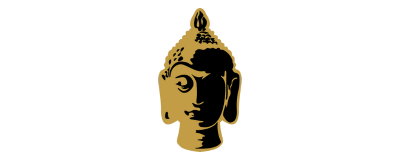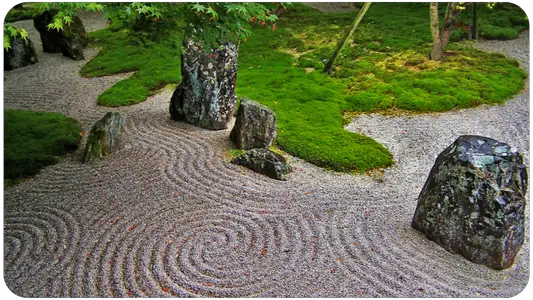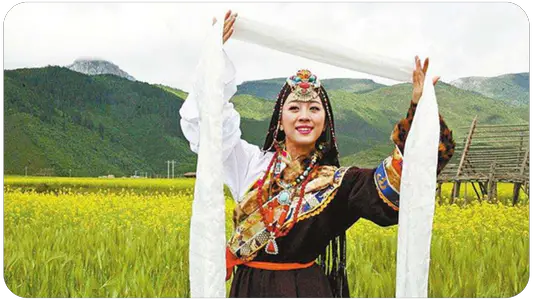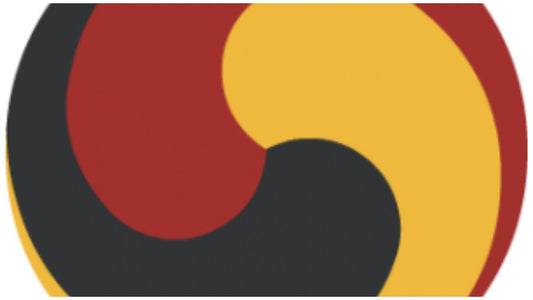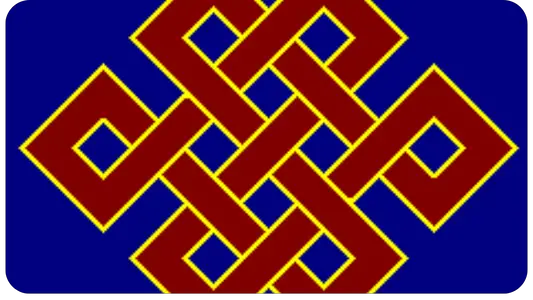The physical characteristics attributed to the Buddha (Sanskrit lakṣaṇa (en), "sign, attribute ") are the characteristics of the body of Siddhartha Gautama Buddha.
There are no depictions of the Buddha in Buddhist art until around the first century, partly because of the importance of aniconism in the early period of Buddhist devotional statuary and bas-reliefs.
A number of early texts describe the appearance of the Buddha, and probably served as a model for early depictions. In particular, the "32 signs of a great man" described in the Pali Canon. These 32 major characteristics are also complemented by 80 other secondary characteristics (Pali: Anubyanjana).
In Mahayana Buddhism, these marks are present on the sambhogakāya, the bliss body, not the nirmāṇakāya, the physical body of the Buddha.
Initial period
The first phase of Buddhism was generally aniconic, with the Buddha represented in symbols such as a footprint, an empty chair, a riderless horse, or an umbrella.
The earliest Buddha statues were made in Gandhara (now the Kandahar region of Afghanistan), and often feature the Buddha and other bodhisattvas with a mustache. Gandhara was conquered by Alexander the Great, and an important school of sculpture developed there from the first to the fifth century, influenced by Greek art.
The thirty-two signs of the Great Man
The Buddha is traditionally considered to have the thirty-two characteristics of a great man (Skt. Mahāpuruṣa Laksana ). These thirty-two characteristics are also considered to be present in the chakravartin, the ideal universal king. These are also enumerated in the Brahmāyu Sutta of the Majjhima Nikāya, the Mahāpadānasutta, the Lalitavistarasūtra.
The thirty-two major characteristics are
Both feet on the same level
Thousand-spoke wheel marks on the soles of the feet
Long fingers and toes
Soft hands and feet
Finely webbed toes and fingers
Prominent heels
Arched instep
Calves like those of a royal stag
Palms reach to the knees
Hidden male organ
Equal height and length of arms
Graceful and curly hair
Golden skin
Ten feet aura around him
Soft skin
The soles of the feet, the palms of the hands and the neck well curved
Dark hairline
The armpits well filled
The torso like that of a lion
The straight body
Broad and round shoulders
Forty teeth
Four pure white canines
White and well arranged teeth
Jaw like a lion
Saliva that enhances the taste of food
Long and wide tongue
The deep and resounding voice
Dark blue eyes
Eyelashes like those of a royal bull
An Urna, a small circle between the eyebrows
The presence of the Ushnisha, a protuberance on the head.
The 80 minor characteristics
The 80 minor characteristics of the Buddha are known to be listed a number of times in the agamas of the Chinese Buddhist canon. According to Guang Xing, the 80 minor marks are related to the thirty-two major marks and are simply a more detailed description of the Buddha's bodily characteristics.
In the Sarvastivadin Abhidharma Mahāvibhāṣa Sastra, the question arises about the relationship between the major and minor marks, and it is said that the minor marks are among the major marks, but not mixed with them, just as flowers in the forest allow trees to stand out.
These 80 minor characteristics have also become important as they have been adopted by Buddhist traditions, including both the Mahāyāna and Theravada traditions. In Pali literature, the eighty minor characteristics are found in the Apadāna (en) and the Milindapañha.
Some scholars believe that the eighty minor characteristics are an early development in the Buddhist tradition, especially important in the Sarvastivada school.
The eighty minor characteristics are
He has beautiful fingers and toes.
He has well-proportioned fingers and toes.
He has tube-shaped fingers and toes.
His toenails and fingernails have a pinkish tint.
His toenails and fingernails are slightly curled at the tip.
Her toenails and fingernails are smooth and rounded, without ridges.
Her ankles and wrists are rounded and without bumps.
His feet are of equal length.
He has a beautiful appearance, like that of an elephant king.
He has a majestic gait, like that of a lion-king.
He has a beautiful gait, like a swan.
He has a majestic gait, like that of a royal ox.
His right foot leads the way.
His knees are not protruding.
He has the demeanor of a great man.
His navel is flawless.
He has a deep abdomen.
He has clockwise markings on his abdomen.
His thighs are rounded like banana sheaves.
His two arms are shaped like elephant trunks.
The lines on the palms of his hands have a pinkish tint.
His skin is thick or thin as it should be.
His skin is wrinkle-free.
His body is flawless from top to bottom.
His body is without blemish or bump.
His body is absolutely free of impurities.
He has the strength of 10,000 million elephants or one million million men.
He has a protruding nose.
His nose is well proportioned.
His upper and lower lips are equal in size and have a pinkish tint.
His teeth are without stain and without plaque.
His teeth are long like polished conches.
His teeth are smooth and without stripes.
His five sense organs are without defect.
His four canines are clear and rounded.
His face is long and beautiful.
His cheeks are radiant.
The lines on his palms are deep.
The lines on his palms are long.
The lines on his palms are straight.
The lines on her palms have a pinkish tinge.
From his body emanates a halo of light extending around him for two meters.
The dimples on his cheeks are well rounded and smooth.
His eyelids are well proportioned.
The five nerves of his eyes are flawless.
The tips of his hair are neither curved nor bent.
He has a rounded tongue.
His tongue is soft and has a pinkish tinge.
His ears are long like lotus petals.
His ear holes are nicely rounded.
His nerves and tendons do not stick out.
Her nerves and tendons are deeply embedded in the flesh.
Her bun is like a crown.
Her forehead is well proportioned in length and width.
His forehead is rounded and beautiful.
Her eyebrows are arched.
Her eyebrow hair is fine.
His eyebrow hair lies flat.
He has large eyebrows.
His eyebrows reach the outer corner of his eyes.
His skin is thin all over his body.
His whole body has abundant signs of good fortune.
His body is always radiant.
His body is always fresh like a lotus flower.
His body is extremely sensitive to touch.
His body has the fragrance of sandalwood.
His hair is of equal length.
His hair is fine.
He always breathes well.
His mouth always has a beautiful smile.
His mouth has the scent of a lotus flower.
His hair is dark.
His hair is strongly scented.
His hair has the scent of a white lotus.
His hair is curly.
His hair does not turn gray.
His hair is fine.
His hair is untangled.
His hair has long curls.
He has a bun as if he were crowned with a garland of royal flowers.
Alternative description
Some have noted that in at least two discourses in the Pali Canon, the Buddha can be interpreted as being bald, as if his head had been shaved.
